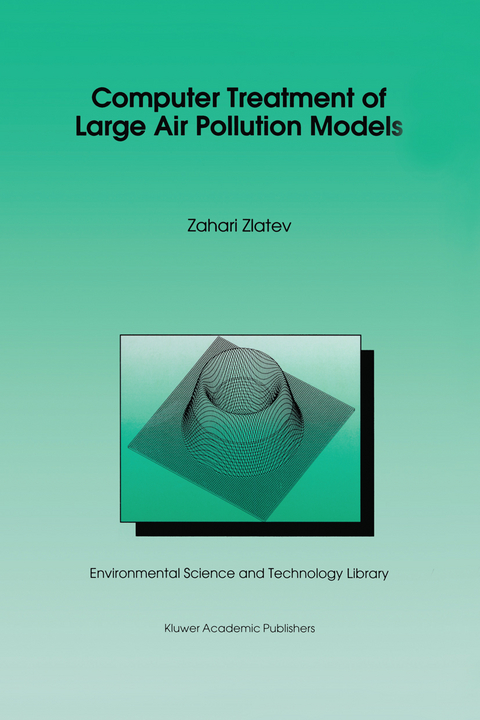
Computer Treatment of Large Air Pollution Models
Seiten
1995
Springer (Verlag)
978-0-7923-3328-9 (ISBN)
Springer (Verlag)
978-0-7923-3328-9 (ISBN)
The long-range transport of air pollutants and the reduction of air pollution to an acceptable level is an environmental problem. The mathematical models by which this problem can be studied are normally described by partial differential equations. This book discusses problems connected with the computer treatment of air pollution models.
"Models are often the only way of interpreting measurements to in vestigate long-range transport, and this is the reason for the emphasis on them in many research programs". B. E. A. Fisher: "A review of the processes and models of long-range transport of air pollutants", Atmospheric Environment, 17(1983), p. 1865. Mathematical models are (potentially, at least) powerful means in the efforts to study transboundary transport of air pollutants, source-receptor relationships and efficient ways of reducing the air pollution to acceptable levels. A mathematical model is a complicated matter, the development of which is based on the use of (i) various mechanisms describing mathematically the physical and chemical properties of the studied phenomena, (ii) different mathematical tools (first and foremost, partial differenti al equations), (iii) various numerical methods, (iv) computers (especially, high-speed computers), (v) statistical approaches, (vi) fast and efficient visualization and animation techniques, (vii) fast methods for manipulation with huge sets of data (input data, intermediate data and output data).
"Models are often the only way of interpreting measurements to in vestigate long-range transport, and this is the reason for the emphasis on them in many research programs". B. E. A. Fisher: "A review of the processes and models of long-range transport of air pollutants", Atmospheric Environment, 17(1983), p. 1865. Mathematical models are (potentially, at least) powerful means in the efforts to study transboundary transport of air pollutants, source-receptor relationships and efficient ways of reducing the air pollution to acceptable levels. A mathematical model is a complicated matter, the development of which is based on the use of (i) various mechanisms describing mathematically the physical and chemical properties of the studied phenomena, (ii) different mathematical tools (first and foremost, partial differenti al equations), (iii) various numerical methods, (iv) computers (especially, high-speed computers), (v) statistical approaches, (vi) fast and efficient visualization and animation techniques, (vii) fast methods for manipulation with huge sets of data (input data, intermediate data and output data).
1. The Air Pollution Problem. 2. Mathematical Models for Studying the Long-Range Transport of Air Pollutants. 3. Numerical Treatment of Large Air Pollution Models. 4. Testing the Reliability of the Numerical Algorithms. 5. Need for Efficient Algorithms. 6. Computations on High-Speed Computers. 7. Running Air Pollution Models on Vector Machines. 8. Running Models on Parallel Machines with Shared Memory. 9. Running Models on Massively Parallel Computers. 10. Numerical Experiments with the Danish Eulerian Model. References. Author Index. Subject Index.
| Reihe/Serie | Environmental Science and Technology Library ; 2 |
|---|---|
| Zusatzinfo | XV, 359 p. |
| Verlagsort | Dordrecht |
| Sprache | englisch |
| Maße | 170 x 244 mm |
| Themenwelt | Naturwissenschaften ► Biologie ► Ökologie / Naturschutz |
| Naturwissenschaften ► Geowissenschaften | |
| Technik | |
| ISBN-10 | 0-7923-3328-4 / 0792333284 |
| ISBN-13 | 978-0-7923-3328-9 / 9780792333289 |
| Zustand | Neuware |
| Haben Sie eine Frage zum Produkt? |
Mehr entdecken
aus dem Bereich
aus dem Bereich


